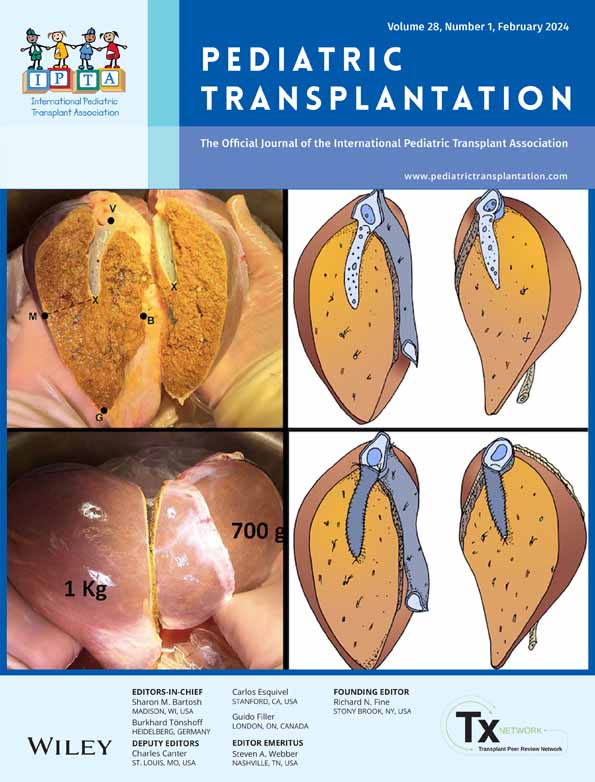Immediate extubation after pediatric liver transplantation: Update on a single-center experience
Abstract
Purpose
Immediate extubation (IE) following liver transplantation (LT) is increasingly common in adult patients. This study reviews our center's experience with IE in children following LT to determine characteristics predictive of successful IE and its effects on post-operative outcomes.
Methods
We performed a retrospective chart review of all patients who underwent LT at our institution between January 2005 and November 2022. Patients with concomitant lung transplants and chronic ventilator requirements were excluded.
Results
Overall, 235 patients met study criteria. IE was achieved in 164 (69.8%) patients across all diagnoses and graft types. Of IE patients, only two required re-intubation within 3 days post-transplant. IE patients exhibited significantly shorter ICU (2 [1, 3 IQR] vs. 4 [2, 4 IQR] days, p < .001) and hospital lengths of stay (17 [12, 24 IQR] vs. 22 [14, 42 IQR] days, p = .001). Pre-transplant ICU requirement, high PELD/MELD score, intraoperative transfusion, cold ischemia time, and pressor requirements were risk factors against IE. There was no association between IE and recipient age or weight. The proportion of patients undergoing IE post-transplant increased significantly over time from 2005 to 2022 (p < .001), underscoring the role of clinical experience and transplant team learning curve.
Conclusion
Spanning 18 years and 235 patients, we report the largest cohort of children undergoing IE following LT. Our findings support that IE is safe across ages and clinical scenarios. As our center gained experience, the rate of IE increased from 40% to 83%. These trends were associated with lower ICU and LOS, the benefits of which include earlier patient mobility and improved resource utilization.
CONFLICT OF INTEREST STATEMENT
The authors of this manuscript have no conflicts of interest to disclose as described by Pediatric Transplantation.
Open Research
DATA AVAILABILITY STATEMENT
The data that support the findings of this study are available from the corresponding author, EJL, upon reasonable request.




